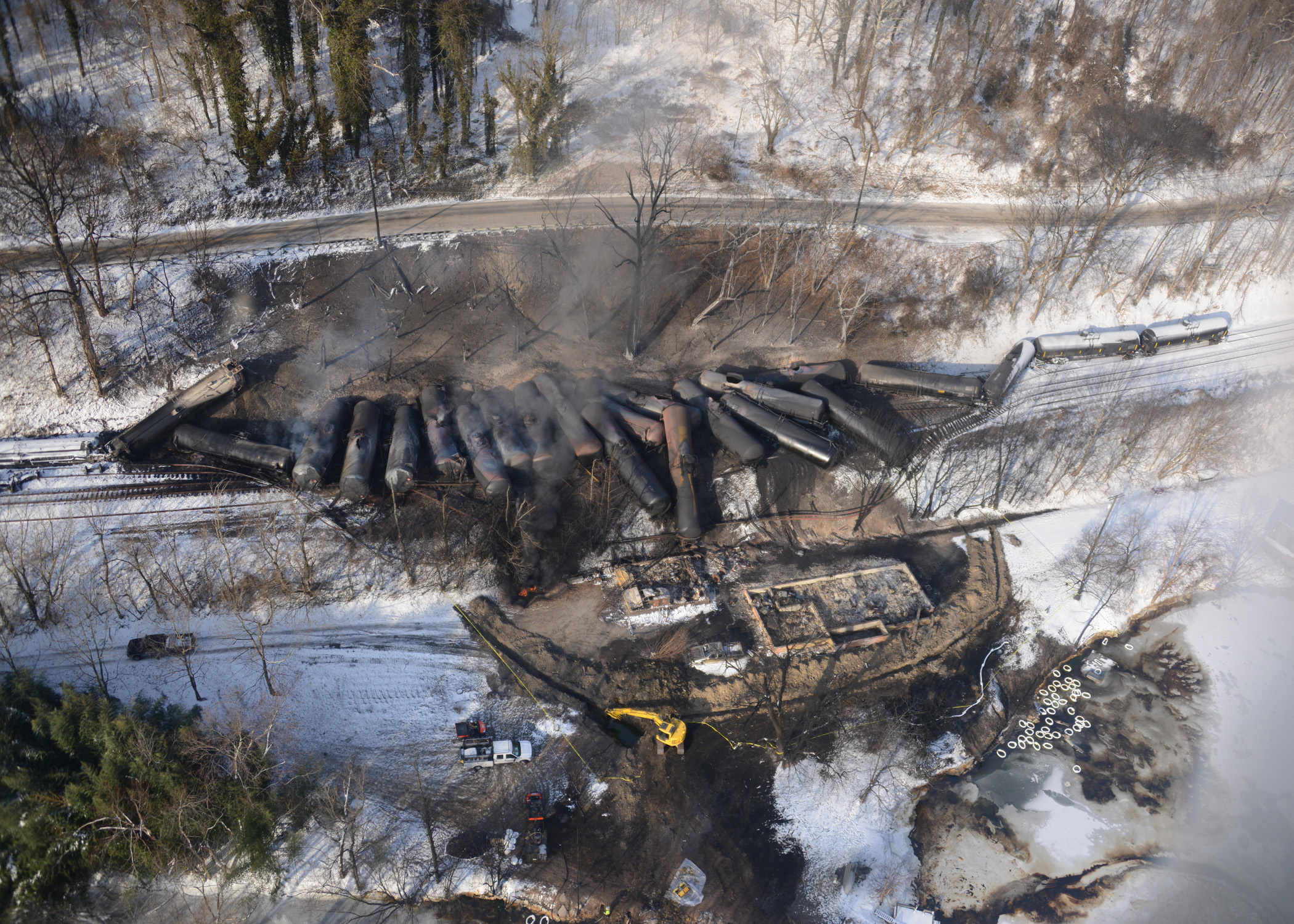October 22, 1944 was an ordinary Friday in Cleveland until 2:40 in the afternoon. That’s when liquefied natural gas (LNG) that had quietly seeped from a storage tank into the city’s sewer lines exploded with staggering force. The blast sent steel manhole covers rocketing into the air—at least one was launched several miles into another neighborhood—as the explosion destroyed 79 homes, two factories, and killed 131 people. The accident scarred the city and still serves as an ominous reminder of the risks of LNG.
Needless to say, LNG storage facilities are much safer now than they were 76 years ago. But LNG is just as explosive as ever. It still poses a serious risk for those handling it, as well as those who live near it – even if they know nothing about it. That risk is coming to eastern Pennsylvania, and it may soon be coming to many communities in the greater Ohio Valley.
A surprising Trump administration ruling in 2020 allowed trains to carry tank cars full of LNG. In response, two separate lawsuits were filed last month—one by 15 states, including Pennsylvania, and another by six environmental groups—challenging federal agencies on the rule. Particularly at risk is eastern Pennsylvania, including Philadelphia, because an industrial facility in New Jersey will likely soon win permits to receive LNG by rail from northeast Pennsylvania. The development is almost certainly a harbinger of more widespread LNG rail shipments that could soon endanger communities near rail lines across the United States, and especially those near gas-producing regions.
Because LNG explosions are extremely dangerous, transporting it has been highly regulated in the US. In fact, it was illegal to move LNG on trains until 2016 when the Obama administration granted permission for limited rail haulage on a single remote in Alaska. That decision was soon followed by the Trump administration awarding special permits to a rail operator in eastern Florida, a decision that came under scrutiny when it was revealed the company had forgiven more than $100 million of debt owed by President Trump.
Now, LNG by rail is coming to Pennsylvania and the Ohio Valley, but in a riskier form.
Both the Alaska and Florida experiments involved moving LNG in relatively small portable storage tanks anchored to steel frames, but now the federal government will allow railroads to move LNG in larger and more vulnerable tank cars, similar to those used for moving crude oil and other hazardous substances. The prospect is worrisome for communities near rail lines because, although derailments are uncommon, they happen with surprising regularity. Rail experts calculate that, on average, there is one freight train derailment for every 1.63 million miles of travel. That sounds infrequent until you realize how many miles freight trains actually travel and how much of that travel happens near population centers. In fact, trains derailed no fewer than 71 times in Pennsylvania in 2019. Of those, 16 were carrying hazardous materials and nine resulted in significant damage to hazmat railcars, including five in Philadelphia County.
A derailment of LNG in an urbanized area could be catastrophic. In fact, it would only take 22 tank cars to hold the equivalent energy of the Hiroshima bomb, according to the public interest law firm Earthjustice. If that sounds like hyperbole, it’s not.
Gas pipeline explosions are relatively well understood and known to be extremely dangerous. Occasionally a local gas pipeline will leak, resulting in a dangerous explosion in a home or business. Or, more frightening, a major gas pipeline will rupture, as happened when the Revolution Pipeline exploded in 2018 near a residential neighborhood in western Pennsylvania. But LNG is gas on steroids: super-cooled to shrink it for easier storage and transportation, LNG has 600 times as much energy by volume as natural gas.
LNG is highly flammable in the case of a spill and, in the event of a railcar rupture, much more dangerous than crude oil. Not that oil train derailments are mild affairs. North America has seen nearly a dozen high profile oil train explosions over the past decade, including one tragic case in Quebec where the resulting conflagration killed 47 people and leveled four blocks of a small downtown core. In other cases, huge oil train explosions narrowly missed killing scores of people in communities, as happened in Lynchburg, Virginia in 2014 and Fayette County, West Virginia in 2015 where residents described the blast as like “the wrath of God.”
The risks in the event of an LNG derailment are even more severe, as Megan Rulli at PennFuture explains in an examination of why LNG rail carriage could be so dangerous. Worse yet, LNG-by-rail does not even offer any compensating benefits for the communities it threatens. Allowing railroads to ship the product produces vanishingly few jobs and creates no additional economic activity along the transportation route. It does, however, create substantial risk for cities and towns located along rail lines.
The federal government’s permissive approach to LNG rail regulation is inconsistent with its normal approach that would typically require studies of safety and environmental impacts. These analyses have not yet been completed—nor has the LNG rail tank car been field tested—leading to objections from the National Association of Fire Marshalls, the National Transportation Safety Board, and many others. Regulators need a slow order. Before granting permission for LNG trains, federal agencies should carefully evaluate the risks, thoroughly vet the tank cars and machinery. Only then should they consider proceeding, and only with the greatest caution.

